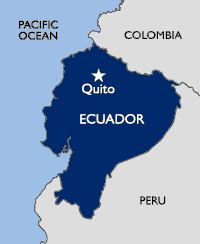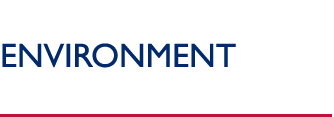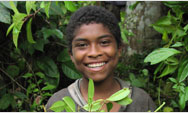Ecuador
USAID’s support of improved resources management and conservation has helped Ecuador achieve sustainable development and higher environmental standards. By preserving natural resources such as carbon-storing forests, USAID has assisted Ecuador to mitigate climate change while simultaneously protecting vulnerable ecosystems.
Background

Ecuador, located on the northwestern coast of South America, comprises continental territory and the Galapagos Islands. It has four distinct geographical regions (coast, highlands, Amazon, and Galapagos), each with a unique climate and environment. Despite its small size, Ecuador contains some of the world’s most biodiverse habitats. Tourism, anchored in the country’s national parks, generates approximately US$2.3 billion per year. This biodiversity is threatened by social, economic, political, and external pressures, including the Colombian conflict. Ecuador’s deforestation rate is the second highest in South America and the highest of any Amazonian country, at approximately 200,000 hectares per year. Its overfishing rate remains alarming and affects the Galapagos Marine Reserve, the world’s third-largest protected marine area.
U.S. assistance to Ecuador focuses on advancing democracy, security and counter-narcotics cooperation, and economic development. To address development challenges – including poverty, exclusion and lack of good governance – USAID/Ecuador has four primary foreign assistance objectives: increase support for the democratic system, improve the quality of life of the population living along Ecuador’s borders, promote sustainable and equitable economic development, and conserve biodiversity.
Sector-Specific Climate Change Activities
Reduced Greenhouse Gas Emissions from Land Use
USAID’s Environment and Natural Resources program is working with communities, local and national governments, and nongovernmental organizations to develop local benefits and strong institutions to conserve globally-important biodiversity. Program objectives are to conserve traditional indigenous areas and national parks (including the Galapagos), and to generate economic benefits from the sustainable management of natural resources. The program covers three geographic areas: lowland indigenous territories (territories of the Awa, Cofan, Huaorani, Kichua, and Chachi), the Galapagos Marine Reserve, and the Tropical Andes. At the end of 2007, 1,260,375 (terrestrial) and 13,000,000 (marine) hectares were under improved management as a result of USAID activities.
A key USAID strategy is to help indigenous groups consolidate management of their territories. USAID partners demarcated 552 km of territorial boundaries, strengthened indigenous rights to ancestral lands, and physically protected natural resources in a total of 1,008,465 hectares. USAID supported the successful efforts of indigenous peoples to obtain legal titles to ancestral territories, enabling them to conserve their carbon-rich primary forests. One benefiting partner is the Awa Federation, which received title to 99,427 hectares in the Chocó region.
In the 2.4 million hectare Condor Bioreserve – a complex of private lands and federal protected areas – USAID and its partners reduced the rate of habitat loss by 88%, maintaining 768,364 hectares of natural vegetation in five protected areas. USAID and its partners also developed sustainable financing mechanisms to fund carbon sequestration in perpetuity. USAID and The Nature Conservancy helped design and implement Quito’s Water Fund. This trust fund invests a portion of every consumer’s water bill in watershed conservation, financing $700,000 in on-the-ground conservation projects each year, such as planting 700,000 native trees in 2007.
USAID/Ecuador’s Southern Border Program included a large ecosystem conservation component in the southern provinces of Loja and Zamorano. Under this component, CARE provided assistance and training to communities to develop and implement natural resource management plans, introduce agroforestry and low impact forestry practices, and facilitate titling of ancestral lands. The program also trained Shuar indigenous communities in conservation and biological monitoring of protected areas, resulting in the protection of nearly 17,000 hectares of forest lands.
Starting in late 2007, the USAID/Ecuador biodiversity program began supporting three new activities:
1. Integrated Management of Indigenous Lands, which counters threats faced by lowland indigenous groups (Waorani, Awa, Cofan, Chachi and Afroecuadorian communities) in northern and eastern Ecuador to secure land rights, strengthen institutions, improve livelihoods, and support the long-term conservation of cultures, territories and natural resources.
2. Watershed Conservation, which protects water sources to conserve biodiversity by using payment-for-ecosystem services to protect watersheds. This initiative will strengthen the Quito Water Fund, support new education and conservation programs, and replicate the sustainable model in Azuay, Tungurahua, and Loja-Zamora. The program will also promote sustainable natural resource use in rural areas by providing resources to improve the livelihoods of communities in upstream watersheds, improve productive activities and generate alternative employment.
3. The Ecuador Sustainable Tourism Alliance (ESTA), which supports economic development through public-private partnerships that leverage resources, strengthens international cooperation, and builds local capacity. Its main objective is to generate benefits and improve living standards of communities in, or adjacent to, nine protected areas, including: Machalilla, Manglares, Churute, Cotopaxi, Cayambe-Coca, Cotacachi-Cayapas, Chimborazo Wildlife, Yasuni-Cuyabeno, and Galapagos.
Finally, the Initiative for Conservation in the Andean Amazon – a centrally-funded USAID activity, building conservation capacity and commitment across the Amazon Basin – is working with the Cofan indigenous group on sustainable livelihoods and sustainable business sectors such as certified coffee and cacao and ecotourism.
Partners
USAID’s partners in climate change activities in Ecuador include:
- Academy for Educational Development (AED)
- Awa, Cofan, and Huaorani, indigenous Federations
- Ecuadorian government agencies, including the Ministry of Environment
- Quito Water Protection Fund (FONAG)
- The Nature Conservancy (TNC)
- Wildlife Conservation Society (WCS)
Because partners change as new activities arise, this list of partners is not comprehensive.
Back to Top ^
|


